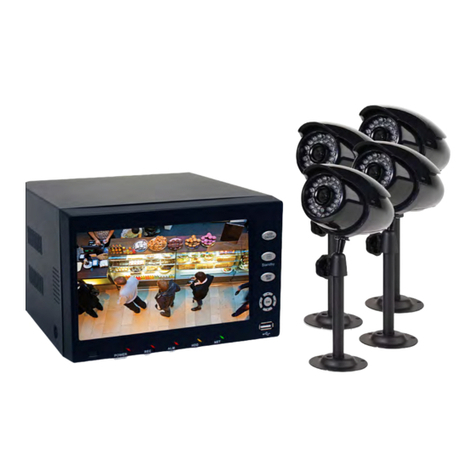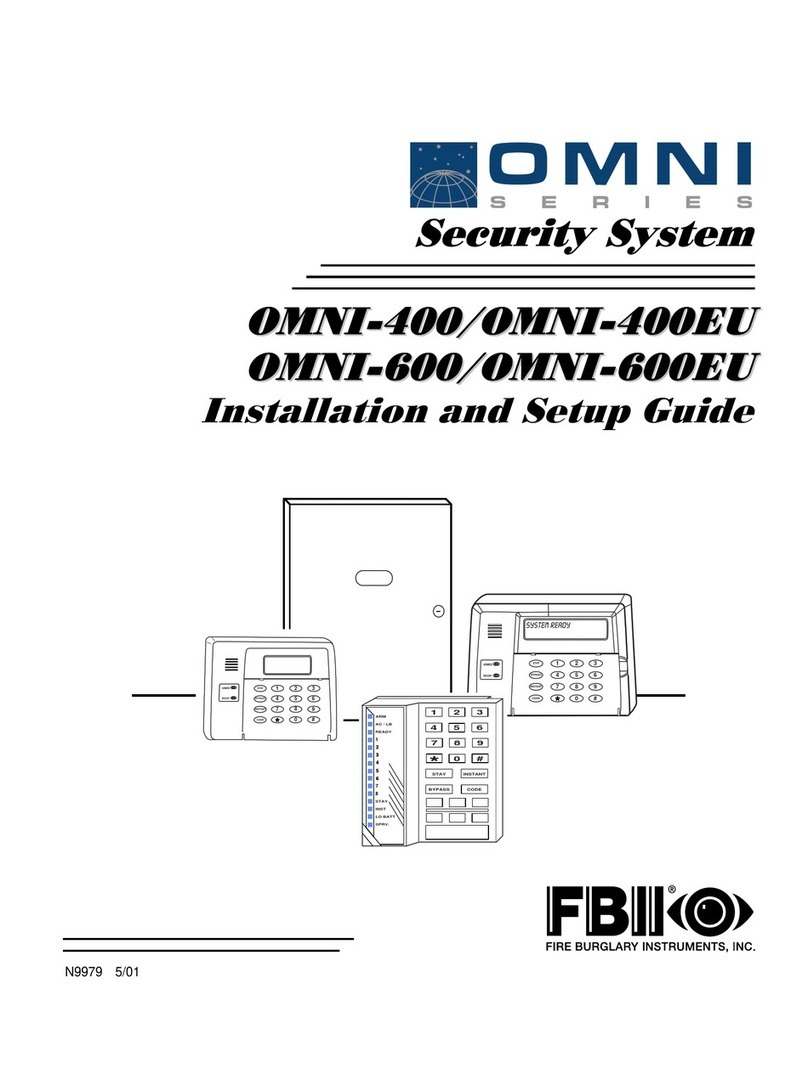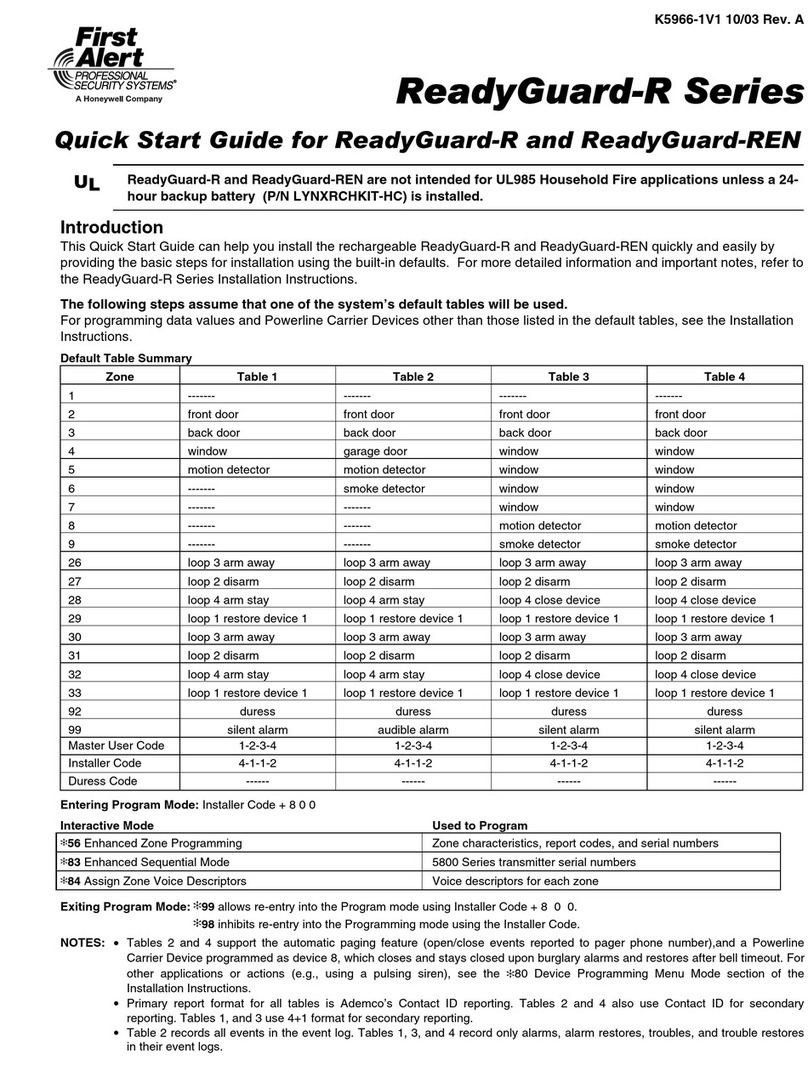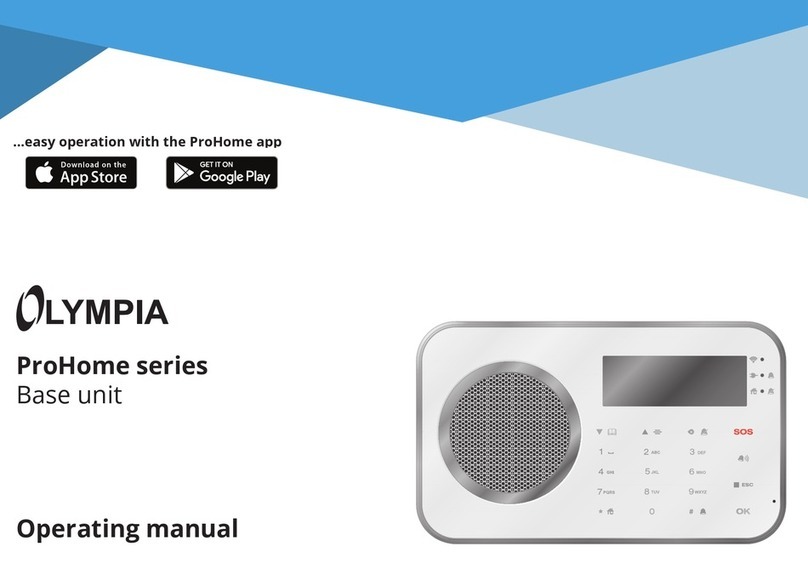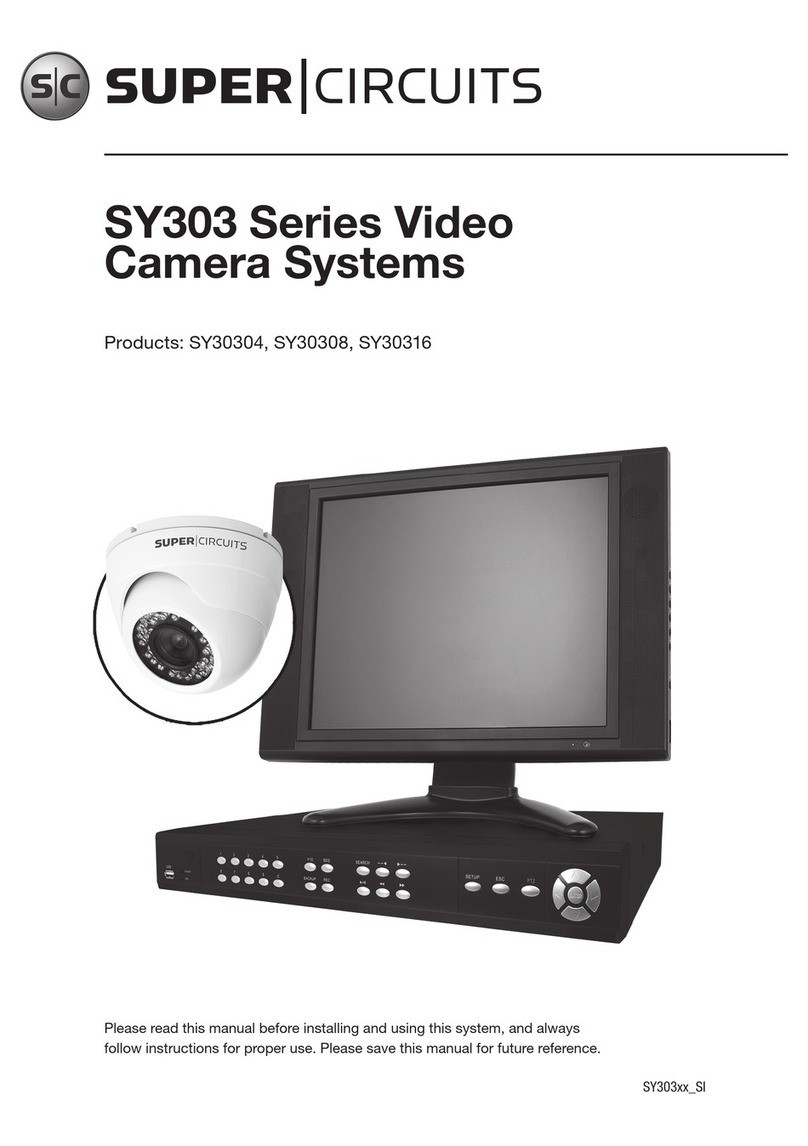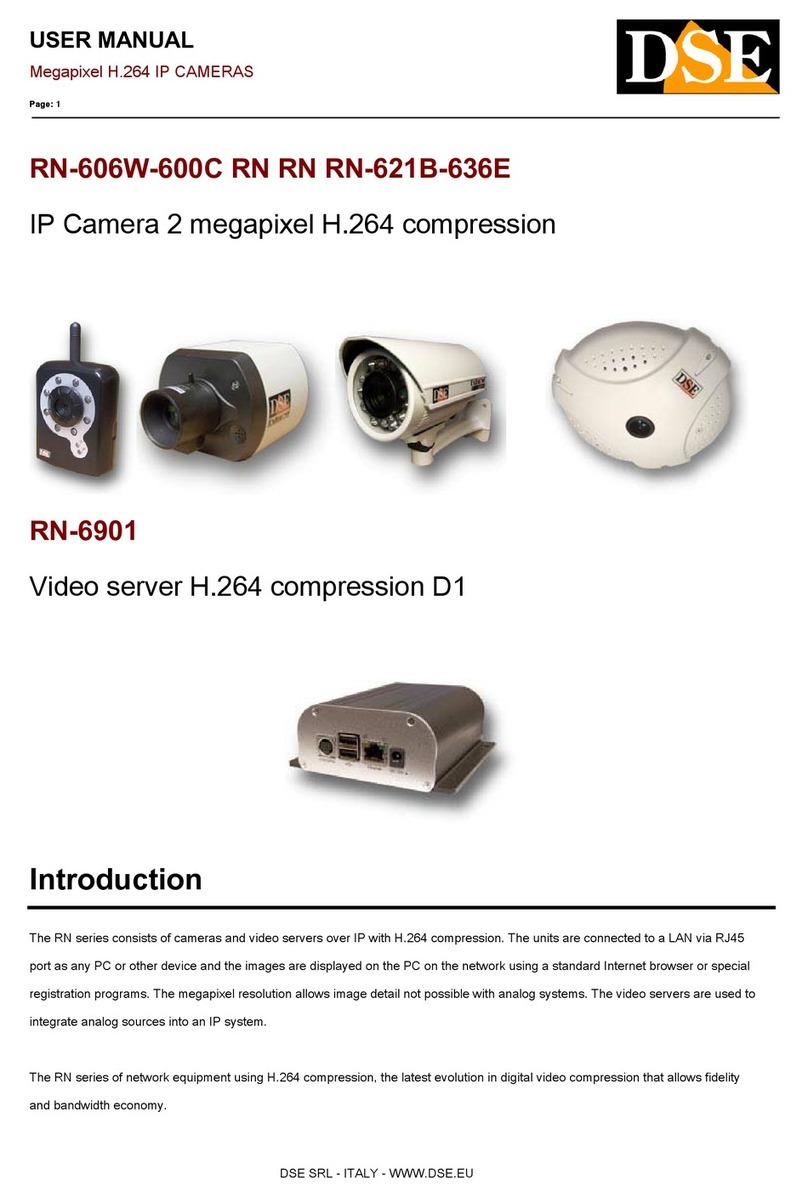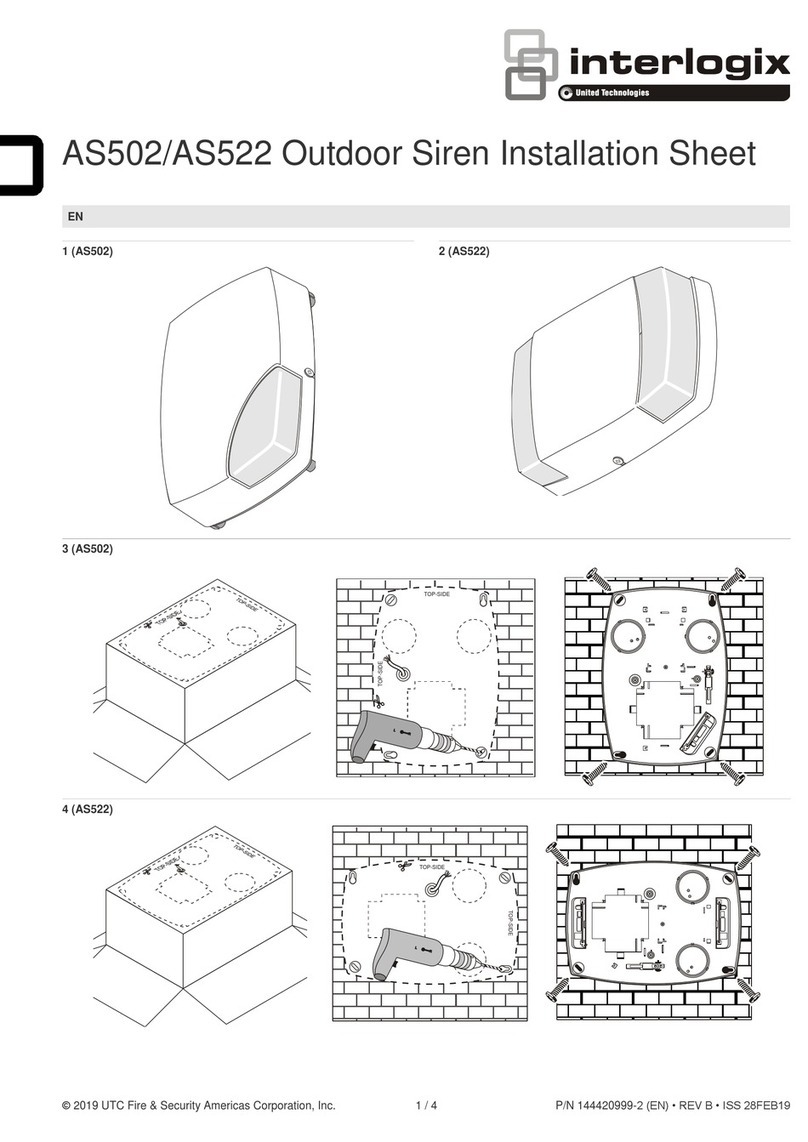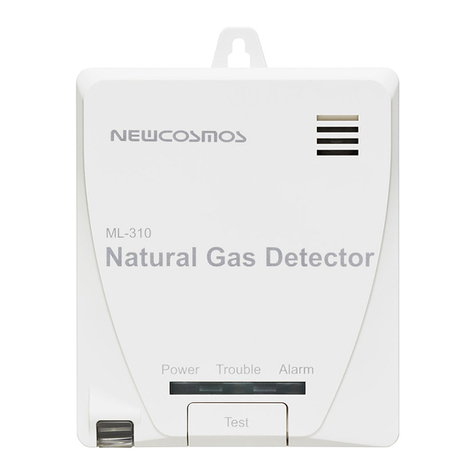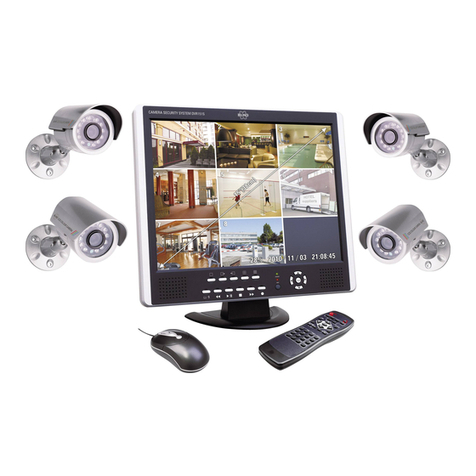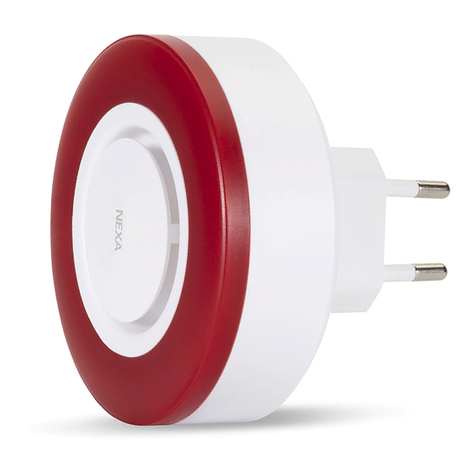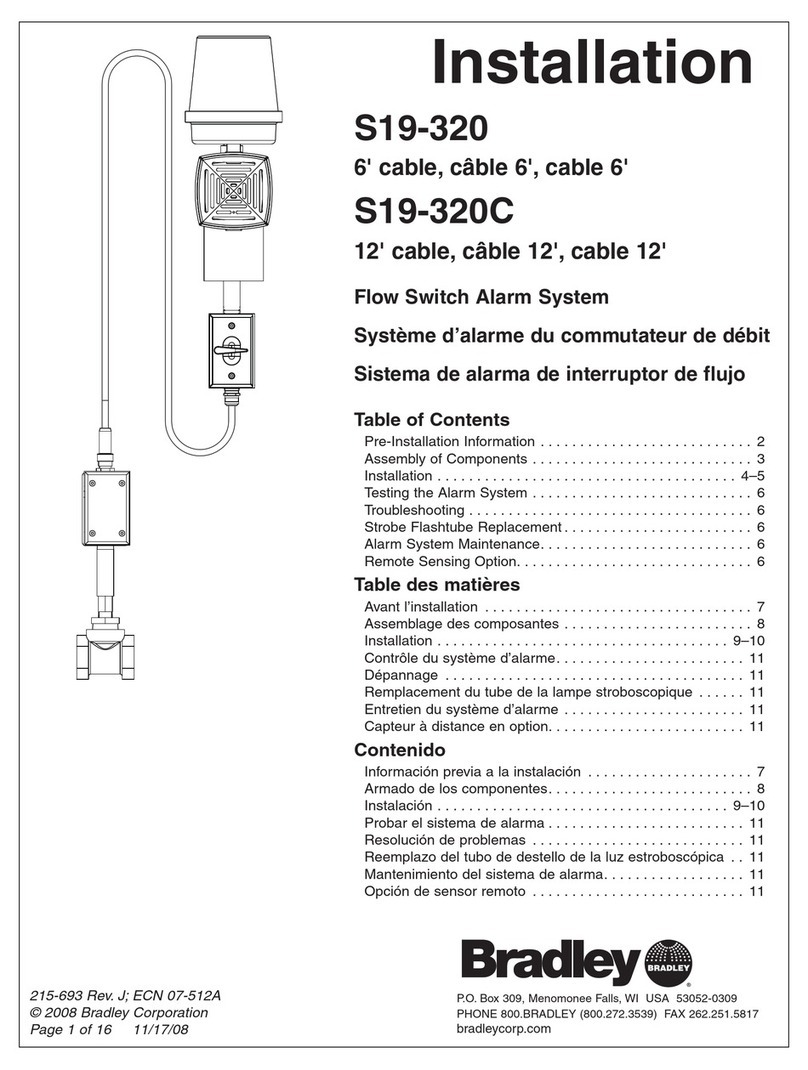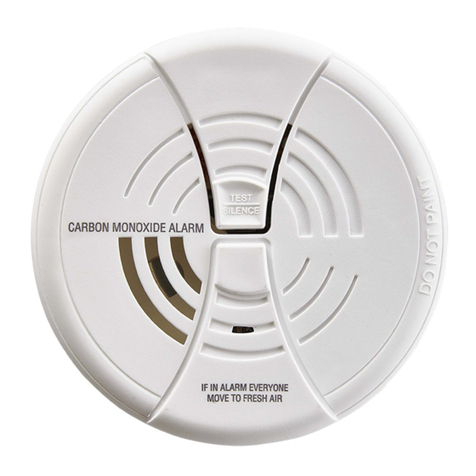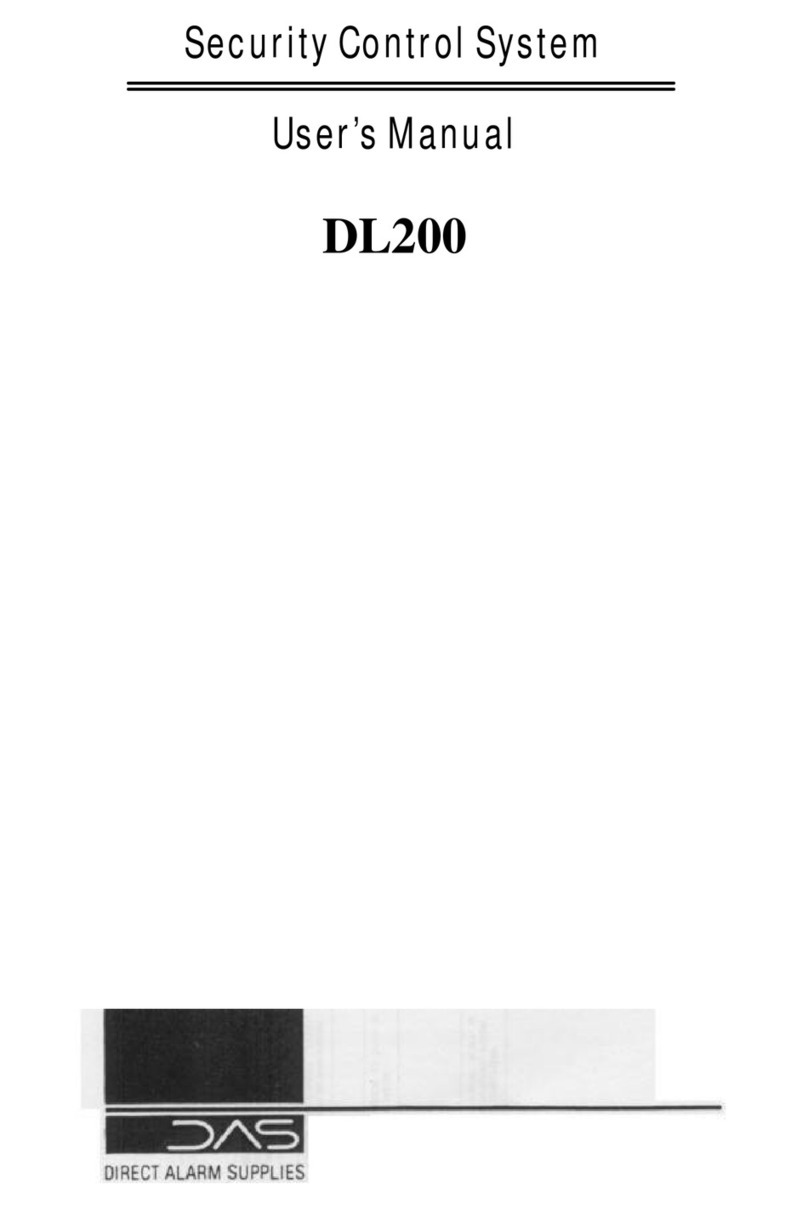Newton Security T-DAR T2010MT User manual

Newton Security Inc | 443 SW 41st St. Renton, WA. 98057 USA | www.newtonsecurityinc.com
T-DAR®TAILGATING / PIGGYBACKING DETECTION SYSTEM
Installation and Operation Manual
Two Head Mantrap
T-DARModel T2010MT

Newton Security Inc | 443 SW 41st St. Renton, WA. 98057 USA | www.newtonsecurityinc.com
(THIS PAGE BLANK)

Newton Security Inc | 443 SW 41st St. Renton, WA. 98057 USA | www.newtonsecurityinc.com
T-DAR®TAILGATING / PIGGYBACKING DETECTION SYSTEM
Installation and Operation Manual
Two Head Mantrap
T-DARModel T2010MT
Revised: 040212

Newton Security Inc | 443 SW 41st St. Renton, WA. 98057 USA | www.newtonsecurityinc.com
TABLE OF CONTENTS
1. INTRODUCTION 3
2. SYSTEM COMPONENTS 3
3. TIPS FOR A SUCCESSFUL T-DAR INSTALLATION 5
4. BASIC INSTALLATION 9
Outputs 9
Inputs 9
Component Mounting 10
Local Device Placement 10
Control Unit Placement 10
Stereo Tracking Head Mounting 11
Annunciator Unit Placement 11
Bi-Directional Mantrap 11
Stereo Camera Heads 11
Camera Head Placement 11
5. INTEGRATION WITH THE ACCESS CONTROL SYSTEM 13
Relay Output Connections 13
Access Readers - Public and Secure Doors 14
Door Lock Control 15
Annunciator Unit 16
Door Contact Switch 17
Supervisor Override 17
6. INSTALLING SOFTWARE 19
User Interface 19
Connection to Computer 19
Configuring the Host TCP/IP Connection 19
Connecting via the User Interface 20
7. CONFIGURATION AND SETUP OF T-DAR SOFTWARE 21
Connect and Verify Camera Functionality 21
Configuring the T-DAR System 21
About T-Dar User Interface Software 22
Connection Menu 23
Debug Menu 24
Initial Setup 26
Monitor Tab 27

Newton Security Inc | 443 SW 41st St. Renton, WA. 98057 USA | www.newtonsecurityinc.com
Page 2of 58
Inputs and Outputs 30
Setup I/O 32
Alarm 32
Playback 32
Video Replay 32
Time 33
Reset Event Statistics 33
Change Admin Password 33
Installer Camera Settings 33
Configuration 34
Scan Zone 34
Setting Scan Zones 35
Dynamic Scan Zone 35
Crawling 37
Setting the Crawling Area 37
Entry from Public / Exit to Public 38
Minimum Head Size 38
L2, L3, L4 and Maximum Head Size 39
Cart Sensitivity 40
Crawler Sensitivity 40
Installer I/O 41
Setup of Outputs 42
Change Administrator Password 42
Advanced Tab 44
8. CRITICAL ELEMENTS TO MAINTAIN PROPER OPERATION 45
Factors That Could Cause Improper Operation 45
Testing the Tracking 45
Test the Scan Zone Areas 45
Test the Dynamic Scan Areas 46
Front Panel Indicator LED’s on the CB210 Control Unit 47
Changing the Voice Announcements via the Built-In Microphone 48
Troubleshooting 49
9. DETAILED SPECIFICATIONS –CB210MT Control Box 54
Power Specifications 54
DC Input Specifications 54
Relay Output Specifications 54
Upper Front Panel Connections 55
Connection Details 56

Newton Security Inc | 443 SW 41st St. Renton, WA. 98057 USA | www.newtonsecurityinc.com
Page 3of 58
1. INTRODUCTION
The patented T-DAR®(Tailgate Detection Alarm and Recording) system uses three-dimensional
optical imaging to detect piggybacking and tailgating through mantraps, security vestibules, sally
ports, or person traps. The Newton T-DAR system detects persons, differentiates them from carts or
other objects inside of the mantrap, and then utilizes stereo machine vision technology to identify and
tag each human within the field of view of the tracking (overhead) camera.
Once the status of a passage is determined to be tailgating or piggybacking, the T-DAR system then
actuates any number of possible results, all controlled and pre-selected from an easy to use user
interface (UI). These alarms and signals range from flashing lights and voice annunciation through
remote alarm, real-time delivery of video of the event to security, and activation of internal or existing
DVR systems.
2. SYSTEM COMPONENTS
B110MT/CB210MT/CB410MT Control Unit
Size: H 16 ½ in. X W 14 1/16 in. X D 6.0 in. (419 mm X 360 mm X
152 mm)
Weight: 26 Ibs (11.7 kg)
Enclosure: Bent steel; completely enclosed with door
Mounting: Via 4 x ¼ in. (6.35 mm) holes on back panel tabs
(optional mounting brackets available)
Standard Operating Temperature: 40° to 110° F (5° - 43 ° C)
(optional high and low temperature systems available)
Storage Temperature: 0° to 125° F (-18° - 52° C)
S100 Annunciator
Size: 6.00" x 8.13 in. x 7.19 in. (152 mm X 206 mm X 184 mm)
Weight: 5 Ibs (2.27 kg)
Enclosure: Bent steel, with high impact plastic indicator
Standard Operating Temperature: 40° to 125° F (5° - 52 ° C)
(optional high and low temperature systems available)
Storage Temperature: 0° to 150° F (-18° - 66 ° C)
DC200LP Stereo Tracking Head
Size: 7.00 in. x 2.50 in. x 2.50 in. (178 mm X 63.5 mm X 63.5 mm)
Weight: 2.2 Ibs (1 kg)
Enclosure: Bent steel
Mounting: Via 4 x 1/8 in. (3.175 mm) holes on back panel tabs
(optional mounting brackets available)
Standard Operating Temperature: 40° to 125° F (5° - 52 ° C)
(optional high and low temperature systems available)
Storage Temperature: 0° to 150° F (-18° - 66 ° C)
(continued)

Newton Security Inc | 443 SW 41st St. Renton, WA. 98057 USA | www.newtonsecurityinc.com
Page 4of 58
I100 Door Position Encoder
Size: 2.40 in. x 2.50 in. x 2.40 in. (61 mm X 64 mm X 61 mm)
Weight: 13.5 ounces (.38 kg)
Enclosure: Machined Delrin
Mounting: Via 4 x ¼ in. (6.35 mm) holes on back panel (optional
mounting brackets available)
Standard Operating Temperature: 40° to 125° F (5° - 52 ° C)
(optional high and low temperature systems available)
WMK-100 Camera Head Wall Mount
Size: Length - 2.5 in. X 26.5 in. (63.5 mm X 673.1 mm) Base Plate
- 0.25 in. X 6.0 in. X 8.0 in. (.635 mm X 152.4 mm X 203.2 mm)
Weight: 3.4 lbs (1.54 kg)
Material: Aluminum sheet and extruded square tube stock, welded
and powder coated
Mounting: Wall Mounting - via 4 x 0.375 in. (9.53 mm) holes on
base panel. Camera Mounting - via 4 x 1/8 in. (3.175 mm) holes on
arm.
MK200B Stereo Camera Drop-Ceiling Mounting Kit
Size: 24¼ in. x 6 in. (61.6 cm X 15.24 cm)
Weight: 2.25 Ibs (1.02 kg)
Material: Bent steel
Mounting: Once the rails are installed between the grid members
of a standard acoustical tile ceiling, the camera holding plate may
be moved into the best position.
Stereo Camera Head Ceiling Height Extender
A mounting kit designed to raise the camera head when the drop-ceiling
height is too low. Mount the camera heads at least 8 ft. 3 in. (2.5m) from
the floor.
Size: H 4.7 in. X W 14 in. X L 19 in. (119.38 mm X 355.6 mm X
482.6 mm)
Enclosure: 12 gauge (0.080 in. / 2.032 mm) aluminum sheet
riveted and powder coated
Mounting: via 12 x 0.25 in. (6.35 mm) holes (three on each side
tab).
Camera Mounting: via 4 x 1/8 in. (3.175 mm) holes on top panel.

Newton Security Inc | 443 SW 41st St. Renton, WA. 98057 USA | www.newtonsecurityinc.com
Page 5of 58
3. TIPS FOR A SUCCESSFUL T-DAR INSTALLATION
To ensure the most accurate detection, it is crucial that the final internal dimensions of a T-DAR-
equipped mantrap adhere to the measurements that an end-user has provided to Newton
Security. The design, performance and price of this system are based upon those specific
characteristics.
Mantrap Construction
For optimum results the mantrap should be of opaque, solid wall construction.
If a glass wall is used for the installation, Newton Security recommends:
There should be no indirect sunlight in the mantrap. If the potential exists for sunlight in
the environment, do the following test on a bright day when there is full sunlight exposure:
oTurn off all lighting fixtures in the mantrap and in the surrounding area.
oIf you can read this manual or similar text in the resulting available light, there
may be too much sunlight for optimum performance.
oPoint a light meter at the source of the sunlight; it should be less than 10LUX.
Any direct sunlight in the mantrap will cause erratic performance and must be avoided.
For the most consistent performance, use the least amount of glass possible, for the
mantrap walls. Avoid using glass doors in the mantrap, as people standing outside the
door (waiting to use the mantrap) may be detected by the T-DAR cameras.
Avoid using fully glassed walls next to a high traffic area, as people may be detected
outside the mantrap wall.
oWe suggest installing two sections of glass in the wall, running the length of the
mantrap if necessary.
oOne section may be placed higher than five feet above the floor, with the other
section below three feet from the floor.
oThis results in an opaque section, between three and five feet above the floor,
and will prevent the cameras from detecting a person standing on the other side
of the glass.
Mantrap Height
The minimum camera height for proper tracking of the T-DAR cameras is 8 ft. (2.44m).
Persons taller than 6.3 ft. (1.9m) may receive higher false alarm rates in mantraps with
camera heights between 8 ft. (2.44m) and 8.5 ft, (2.60m).
A ceiling height above 9 ft. is recommended for low false alarm rates
For ceilings at 8.2 ft. (2.47m) or above, camera height extending kits are available.
Mantrap Size
The mantrap size is limited by the height and viewing angle of the camera heads. The limits
specified below are rigid and cannot be exceeded. Exceeding the two-head mantrap size
limitations will leave a significant gap in tracking, and security. When the mantrap is built
oversize, by any amount, a three or four head T-DAR system should be purchased.
The maximum length of a mantrap with cameras lower than 9 ft. (2.74m) is 9 ft. (2.74m).
The maximum mantrap width with cameras lower than 9 ft, (2.74m) is 4.75 ft. (1.45m).
The maximum length of a mantrap with cameras above 9 ft. (2.74m) is 10 ft. (3.00m)
The maximum width of a mantrap with cameras above 9 ft. (2.74m) is 5 ft. (1.50m).

Newton Security Inc | 443 SW 41st St. Renton, WA. 98057 USA | www.newtonsecurityinc.com
Page 6of 58
Cameras
Ensure that the cameras are securely mounted and not susceptible to any movement such as:
The opening or closing of mantrap doors, and/or
Vibration of the drop-ceiling caused by air pressure changes within the mantrap
Mount and align the DC200LP Stereo Camera Heads in the proper locations:
oFor camera heights below 9 ft. (2.74m), space the two camera heads no more
than 4.5 ft. (1.4m) apart.
oFor camera heights above 9 ft. (2.74m), space the two camera heads no more
than 5 ft. (1.5m) apart.
oFor camera heights below 9 ft. (2.74m), ensure there is no more than 2.25 ft.
(0.70m) from each camera head (camera center) to the adjacent door or walls.
oFor camera heights above 9 ft. (2.74m), ensure there is no more than 2.5 ft.
(0.76m) from each camera head (camera center) to the adjacent door or either
wall.
Video Cables
For optimum performance, strong video signals are required.
For the coaxial camera cables, it is highly recommended to use compression fittings
rather than crimp-on fittings. For example: Paladin-brand compression fittings are a good
representative.
For the camera power/sync connections, use Cat 6 Ethernet rather than Cat 5 Ethernet
cabling.
Ensure that video cables are well separated from any power circuits and cables, solenoid
locks, automatic door hardware, motors, and vibrations.
All T-DAR video cable runs need to be isolated in steel conduit, not shared with other
wiring.
Cable runs must be un-interrupted, with no junction points or splices
Floor Surface
Avoid reflective or patterned floors within a mantrap.
Use a medium shade floor of any color. A medium shade floor will provide a good
contrast between dark clothing and the floor.
Install carpeted or mat flooring over hard/tiled flooring. This will reduce light reflections
from the ceilings.
Avoid installing carpet with repeating patterns or stripes
When a tiled or wood floor is part of the mantrap, ensure that there are no highly visible,
repeating seams or patterns.
Use a material that will not show excessive dirt or tracks.
Flooring may be of any color, although we recommend using a color that does not show
dirt or tracks.

Newton Security Inc | 443 SW 41st St. Renton, WA. 98057 USA | www.newtonsecurityinc.com
Page 7of 58
Lighting
Adequate and consistent downward lighting is required for accurate operation. To detect tailgate
violations, the T-DAR requires adequate and consistent downward lighting in the mantrap.
Failure to provide adequate lighting will result in increased false alarm rates, as well as the
possibility of missing a violation.
To provide consistent light levels across the entire mantrap, use at least one fluorescent
panel per T-DAR camera head. Florescent lighting creates a more evenly lit environment
and reduces bright reflections.
If low-frequency fluorescent lighting is used, a line-lock is required.
oIf the lighting in the mantrap consists of low frequency (older, style-line frequency)
fluorescents, use the AC wall-mounted transformer that is included with the T-
DAR control unit to ensure proper operation of the T-DAR system.
oThis transformer, or another low voltage AC source of 6 to 30 VAC, will provide
the correct line locking of the T-Dar system to the building lighting.
We highly discourage the use of direct lighting, such as can-style fixtures, or filament-
style bulbs.
If the mantrap has a tiled and/or polished floor, take care that the lighting is highly diffuse.
The minimum acceptable amount of lighting for proper operation of the T-DAR system is
300LUX (30 foot-candles). Illumination must be added if the levels are below this point.
Record downward light, measured approximately 1m (40 inches) above the floor and
away from the body.
The Illuminating Engineer Society of North America (IESNA) bases lighting specifications
on data for Performance of Visual Tasks. High contrast, calls for approximately 300 to
500 LUX (30 to 50 foot-candles).
If sunlight is a factor, take all light measurements after dark.
Hardware & Finishes
Avoid reflective horizontal surfaces as may exist on door hardware, access control units and
glass frames.
When selecting door panic hardware for the inside of the mantrap, select hardware with a
black or bronze finish.
Avoid large horizontal reflective surfaces on frames around glass walls or windows in the
mantrap. Glass with large horizontal metal frames may reflect excessive light toward the
T-DAR sensors.
Where metal surfaces are called for in the mantrap design, apply a dark or non-reflective
coating to the top surface.
Placement
Locate the mantrap as far away from sunlight as possible. Changes in ambient light levels (day-
to-night) in the mantrap may increase the chance of false detection and false alarms.
Avoid mounting the access reader between camera heads in the center of the mantrap.
The access reader should be mounted under the camera on the secure end of the
mantrap.
Power
T-DAR requires a 24VDC power supply for operation.
An external 24V DC power supply with a peak current of 10 Amps is required.
A power supply is NOT included with the T-DAR system.

Newton Security Inc | 443 SW 41st St. Renton, WA. 98057 USA | www.newtonsecurityinc.com
Page 8of 58
Additional Installation Tips and Known Issues
When using an electric solenoid locks, reverse voltage diodes across the solenoid terminals must be
used to reduce voltage feedback to the system.
WARNING: When mounting the TDAR on the wall or cabinet, ensure that there is at least six
inches (150mm) between each TDAR or any other physical barrier for proper ventilation. Do
not mount one T-DAR control unit with its heated exhaust directed toward the fan intake of a
neighboring T-DAR control unit.
The area where the camera will be viewing needs to be very well lit. Lighting conditions cannot
change over time. If lighting conditions change, the T-DAR unit must be recalibrated to accept the
new lighting conditions.
Failure to supply Line lock input signal if low frequency fluorescents are utilized in the mantrap may
cause erratic system operation.

Newton Security Inc | 443 SW 41st St. Renton, WA. 98057 USA | www.newtonsecurityinc.com
Page 9of 58
4. BASIC INSTALLATION
Outputs
There are various outputs on the T-DAR mantrap controller:
A public door lock output
A secure door lock output
Three configurable outputs for various alarm scenarios.
Inputs
The T-DAR controller contains five inputs:
An override input
Two door contact switches, and
Two valid access signals
Both access signals will provide access through the secure door, not the public door. The Secure
Door, Public Valid reader will be located on the public side of the secure door (in other words, within
the mantrap) and the Secure Door, Secure Valid reader will be located on the secure side of the
secure door.
WARNING: Do not mount the Secure Door, Public Valid reader in the centre of the mantrap.
The reader should either be mounted under the camera on the secure end of the mantrap
where the tracking is the most accurate. (See the illustration on the following page.)
All inputs terminate across a specific input terminal and ground.
The T-DAR controller does not accept any valid-access signals from the public door.
The T-DAR controller will only lock the public door when the secure door is open or unlocked.
In a normal state, T-DAR does not hold the public door locked. Normal access control
through the public door is optional, but not provided by T-DAR.
A reference voltage for all inputs is generated via a jumper between “input common” and
+12VDC. The system will not operate without a reference jumper for each input.
Typical T-DAR outputs and inputs - Note the position of the Secure Door Public Valid reader

Newton Security Inc | 443 SW 41st St. Renton, WA. 98057 USA | www.newtonsecurityinc.com
Page 10 of 58
Component Mounting
Before any installation is begun, make sure that the proposed locations provide adequate room for all
electrical conduits that may be necessary. You will find dimensions for the specific components in an
earlier section of this manual.
Local Device Placement
Place components such as the door position sensor, camera heads and annunciator unit
within a certain linear distance of the controller to minimize the effects of voltage drop.
Do not exceed a distance of 200 feet (60m), unless a Cable Extender/Amplifier unit is used.
Information about the cost and part number of the Cable Extender/Amplifier is available from
Newton Security.
Control Unit Placement
The Control Unit should be located in a place that allows for access to the unit, is clean and affords
the unit protection from damage or vandalism. Whenever possible, install on the secure side, outside
of the mantrap, to reduce the risk of vandalism and attempts to defeat.
WARNING: When mounting the TDAR on the wall or cabinet, ensure that there is at least six
(6) inches between each TDAR or any other physical barrier for proper ventilation.
Special Note - Do not mount one T-DAR control unit in a location where its heated exhaust is
able to be ingested by the fan intake of an adjacent T-DAR control unit. This will invariably
lead to the rapid overheating and failure of the ingesting control unit.
The unit should be located in an area that provides 24VDC power at 10Amps.
Mount and ground the unit in accordance with National Electrical Code (NEC) guidelines.
The control unit should be located within an acceptable distance to the access control system
so that door status signals and inter-system communications and signals do not significantly
diminish by voltage drop.
Maintain adequate clearance on the sides and top of the unit to facilitate the installation of
conduit. The clearance at the front of the unit should meet the requirements established for
electrical panels by the National Electrical Code (NEC).
Place the Control Unit in a location free from excessive moisture and contaminants, as
environmental conditions can damage the controller.
Use care when drilling holes in other adjacent fixtures that no metal dust or chips falls onto
the T-DAR controller. The unit is equipped with mounting tabs that will accommodate ¼-inch
mounting hardware.
WARNING: Do not modify the T-DAR control unit, by cutting or drilling. This will void the
warranty and surely cause damage to the unit.

Newton Security Inc | 443 SW 41st St. Renton, WA. 98057 USA | www.newtonsecurityinc.com
Page 11 of 58
Stereo Tracking Head Mounting
Mount the camera heads directly to a ceiling utilizing the mounting tabs that accommodate up
to a number 12 screw, or use a Newton MK200 ceiling mount kit designed to work in a variety
of applications such as drop tile ceiling or hard ceiling.
Take care to ensure adequate access to the connection ports on the back of the unit. Mount
the stereo tracking heads in the ceiling, aligned with the center mid-line of the mantrap as
shown in the diagram on the following page.
Ensure that there are no low-mounted objects within the mantrap large enough to enable a
person to hide from the view of the cameras.
A two-head T-DAR installation of this type should be in a space no larger than 5ft by 10ft
(1.5m x 3m).
Annunciator Unit Placement
Locate the Annunciator unit within the mantrap to announce violations to the occupant as well as the
persons in the secure area. The annunciator unit is fitted with conduit knockouts on the sides of the
unit. Maintain adequate clearance on the sides of the unit to facilitate conduit installation.
Additionally, adequate clearance is required on the front of the unit to allow for adjustment of the
volume control.
Bi-Directional Mantrap
A bi-directional mantrap will prevent tailgating during egress as well as tailgating during entry.
Converting a mantrap to bi-directional requires installation of bidirectional software. A bidirectional
mantrap utilizes the same inputs and outputs as a uni-directional mantrap: two door contacts, two
valid access readers, and a public and secure door lock. The pass-through procedure in a bi-
directional mantrap is the same as the pass-through procedure in a uni-directional mantrap.
Depending on the installation type, there are two optional methods of egress in a bidirectional
mantrap. The first method of egress requires a valid access read on the inside of the mantrap, while
the second method of egress does not require a valid access on the inside reader.
Note: The T-DAR unit has only one available input to recognize a valid read from the inside
of the mantrap. Use the Secure Door, Public Side reader, when a valid read is required on
egress.
Stereo Camera Heads
Camera Head Placement
Place the cameras in accordance with the diagram shown below. Locate camera head one (1A & 1B)
on the secure end of the mantrap. Position the cameras in line with one another and perpendicular to
the doors. If the doors are not located at the ends of the mantrap (as shown below), consult Newton
Security for assistance on placement of the heads. Center each camera between the left and right
walls of the mantrap. Align each camera parallel to the left and right wall (shown below). Space the
cameras as in the diagram below, making the distance between the two cameras (camera center’s)
equal to half the length of the mantrap. Center the cameras lengthwise so that the distance from
camera to door is equal on both ends.
Note: if the ceiling is less than 8.5 ft. (2.6m), consult Newton Security technical support
before proceeding.

Newton Security Inc | 443 SW 41st St. Renton, WA. 98057 USA | www.newtonsecurityinc.com
Page 12 of 58
Camera Head Placement
Camera Cabling
For each Camera Head:
Run two video coaxial cables (75 Ohm) with BNC connectors.
Run a single CAT5 (Ethernet) cable.
Camera Cable Terminations
For each Camera Head, install and terminate two video coaxial cables (75 Ohm) with BNC
connectors.
Label the cables so that cameras 1A, 1B are easily distinguishable.
On the face of each camera head, the labels “Camera 1” and “Camera 2” correspond to
camera connections “A” and “B” respectively.
For both the camera heads, install and terminate a CAT5 cable (straight through) at the
T-DAR control box.
For camera head one (1), to be mounted adjacent to the secure door, attach the CAT5
connector to the “Cam 1” port on the upper panel.
Do the same for camera head two (2) to be mounted adjacent to the public door; attach the
CAT5 connector to the “Cam 2” port on the upper panel.
Control Unit Connections
On the control unit, install and terminate:
One (1) CAT5 cable (straight through) from Annunciator to control panel on port “Annunc 1”.
An adequate number of wires to support the inputs and outputs utilized on the system.
A typical mantrap - top view

Newton Security Inc | 443 SW 41st St. Renton, WA. 98057 USA | www.newtonsecurityinc.com
Page 13 of 58
5. INTEGRATION WITH THE ACCESS CONTROL SYSTEM
Relay Output Connections
The T-DAR T-2010 control unit is equipped with four relays on the General 1 connector, plus one
relay on each of the portal connectors. Use these relays to signal various alarm conditions based on
user configurable options in the user interface. Relay outputs have no polarity and are dry, providing
no voltage. Various degrees of customization are possible through coordination with Newton Security.
The output relays are single pole/single throw, and normally open.
Typical Configuration
Notes:
There is no option for setting the relay outputs to normally closed.
All input grounds are common
A jumper between +12VDC and common generates a reference voltage for all inputs

Newton Security Inc | 443 SW 41st St. Renton, WA. 98057 USA | www.newtonsecurityinc.com
Page 14 of 58
Access Readers - Public and Secure Doors
Each valid access grant switch must be electrically isolated from the access control system to allow
for proper operation. This will typically require the installation of a double pole/double throw relay that
provides an output to the T-DAR system. This is necessary to ensure that there is no noticeable
latency in the receipt of a valid access grant signal by T-DAR. Failure to use isolated circuits or using
access control system auxiliary outputs/relays to simulate valid access switch activity may result in
poor system performance.
Public and Secure Valid Access Connections

Newton Security Inc | 443 SW 41st St. Renton, WA. 98057 USA | www.newtonsecurityinc.com
Page 15 of 58
Door Lock Control
Two relays on the T-DAR unit control locking of mantrap doors. These relays are normally open and
will close (engage) to lock, each door. Relay Closed = Door Locked. The normally open status of
these relays is not switch-able. The T-DAR locking relays terminate at 1a/1b and 2a/2b on the “A”
Phoenix connector. When either the public or secure relay outputs close (engage), the corresponding
door should lock. There are two options for mantrap door control, explained below.
Note: If power to the T-DAR unit is lost, all T-DAR relays will open, potentially unlocking the
doors (this is dependent on the door lock integration).
Option 1 (Dual control of the public door)
When controlling the public door lock by a separate access control system (adjacent to T-DAR), the
access control system should maintain control of the public door lock, even when powering down the
T-DAR unit. Alternatively, the T-DAR unit should be able to keep the public door locked, regardless
of the state of the access control. The diagram below shows a single T-DAR unit controlling the
public and secure door locks. The public door will lock only when the T-DAR unit AND/OR the
access control system sends a lock signal. In other words, neither system should have the ability to
open the public door alone.
Note: The T-DAR controller does not lock the public door when the mantrap is not in use.
For this reason, the end user may want to add a reader (and access control) to the public
door.
Option 2 (Stand Alone T-DAR Mantrap)
The T-DAR mantrap system may operate independent of an access control system. In this
installation, the T-DAR controller will control both, public and secure door locks without access control
on the public door. The T-DAR software will perform precisely the same as in Option 1, maintaining
door control and all other functionality. When the T-DAR unit controls the public door solely, it will
keep it unlocked until the secure door is open (or unlocked). In situations where power is lost to the
T-DAR unit, the doors will be unlocked unless there is a failsafe system to keep the doors secured.
Note: in this option, the mantrap will only have one door locked at a time. As in Option 1,
both doors cannot open at the same time.

Newton Security Inc | 443 SW 41st St. Renton, WA. 98057 USA | www.newtonsecurityinc.com
Page 16 of 58
Protecting T-DAR from Door Lock Feedback
Use external relays to isolate the T-DAR from door locking voltage feedback. Use diodes across the
solenoid terminals of the external relays to reduce voltage feedback to the T-DAR (shown below).
Power for the T-DAR controller should be isolated from door locks or any motorized door hardware.
The T-DAR controller requires 24VDC at 8amps.
WARNING: Failure to use external relays with the Chexit, or similar solenoid locks, can
damage the T-DAR control box.
Note: there is no polarity on the T-DAR output relays.
Annunciator Unit
Place the annunciator inside the mantrap to notify the occupant(s) of a violation.
Adjust the volume on the annunciator so that the instructions may be clearly heard. The
volume knob is located on the top of the unit, under the black plastic plug.
Install and terminate one Ethernet cable (straight through) on the annunciator, leading directly
to the ‘Annunc 1’ connector on the T-DAR control unit.
T-DAR mantraps use one annunciator, so the ‘Annunc 2’ is not used.
If the annunciator is not activating, or is not playing the proper recordings, use the test
buttons on the “Advanced” tab to test the functionality.
If the strobe and/or voices do not play using the test buttons, check the CAT5 cable using a
network cable tester, (unplug the cable from the T-DAR before testing).
WARNING: plugging in a camera head (CAT5 cable) into an annunciator port or using a
crossover cable to connect a camera, may damage the control unit or camera head.

Newton Security Inc | 443 SW 41st St. Renton, WA. 98057 USA | www.newtonsecurityinc.com
Page 17 of 58
Door Contact Switch
Public Door Contact Secure Door Contact
Typical Configuration
The door contact switch must be independent of the access control system to allow for proper operation.
This will typically require the installation of a double pole/double throw door switch, or the addition of a
second door contact.
WARNING: Failure to use isolated circuits, or using access control system outputs/relays to
simulate door contact activity, can result in poor system performance.
There can be no noticeable latency in the receipt of door switch signals by T-DAR.
The door position switch will connect to the Portal Contact terminal and to either ground or
+12v (or applicable source voltage) dependent upon installation type.
Ensure that the distance from the control unit to the door position switch is less than 200 ft.
(60m). Contact Newton Security for guidance on longer distances.
A jumper between +12VDC and common determines the reference voltage for all inputs.
All input grounds are common.
Supervisor Override
The supervisor override will allow multiple persons and objects of any size to pass through the
mantrap, without alarming or preventing passage.
With supervisor override enabled, the T-DAR will not enable both doors to be open at the
same time.
Supervisor override alone will not open the public or secure door.
For passage through the mantrap using supervisor override, the Secure Door, Public Side
reader must still be validated while the public door is closed.
While holding the override signal, the strobe will continue to flash on the Annunciator.
If the end user requires that both doors open at the same time (e.g. during an emergency),
external wiring and programming may be used to disable the T-DAR lock output to the doors.
Supervisor override is input 1 on the T-DAR control box, which corresponds to B1 on the front
T-DAR panel.
Table of contents

